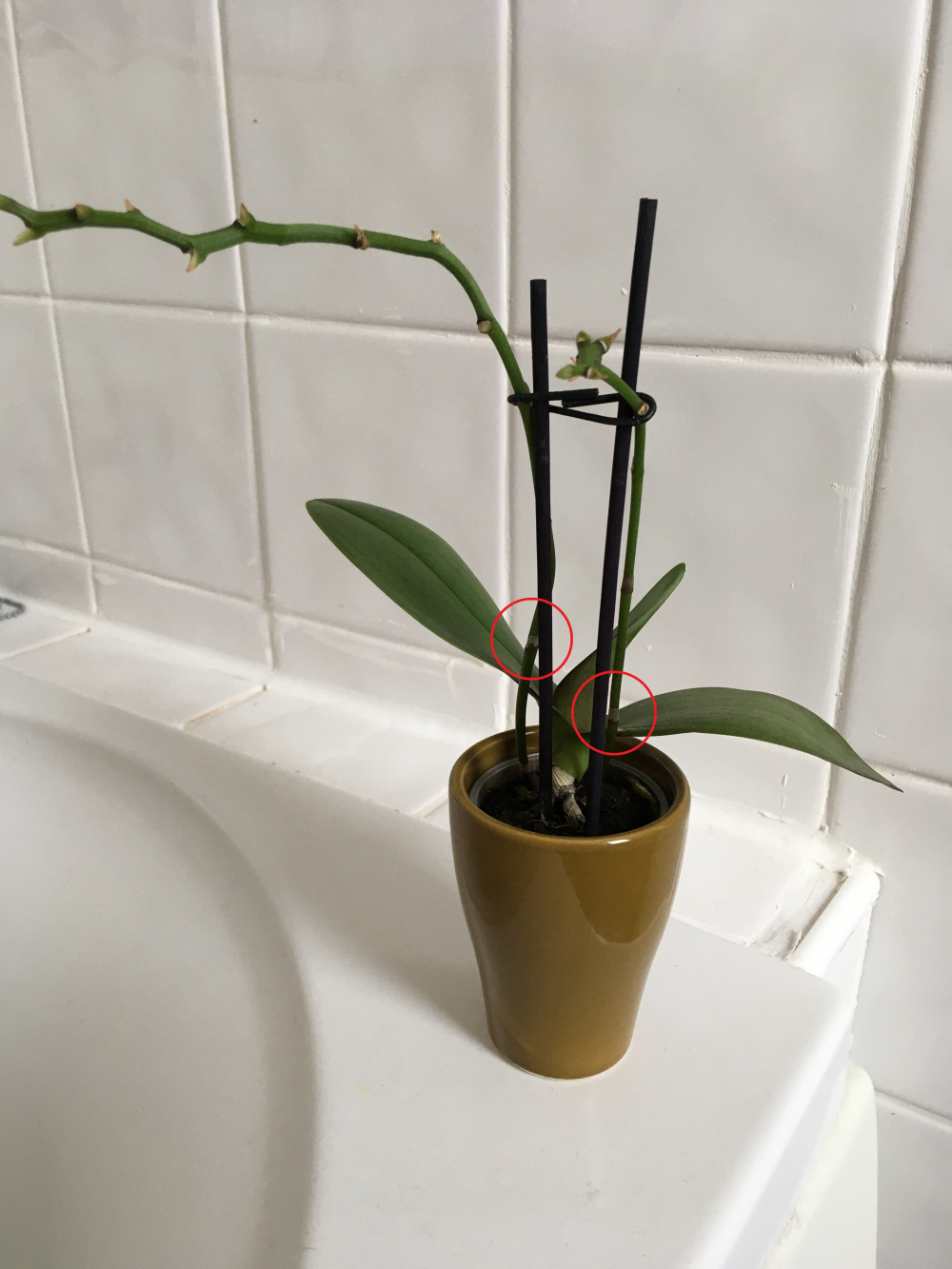This Forum will close on Wednesday 27 March, 2024. Please refer to the announcement on the Discussions page for further detail.
Cutting back Moth Orchid
in Plants
Only got this recently but flowering has just finished.
Am I correct in saying I should now cut the flowering stems back to just above the last nodes (circled) on the attached photo?

Am I correct in saying I should now cut the flowering stems back to just above the last nodes (circled) on the attached photo?

0
Posts
Gardening in Central Norfolk on improved gritty moraine over chalk ... free-draining.
How often do you feed yours? I've read things suggesting every other watering but I also found something on the RHS site saying to feed every 3 out of 4 waterings.
flowerings.
Gardening in Central Norfolk on improved gritty moraine over chalk ... free-draining.
Gardening in Central Norfolk on improved gritty moraine over chalk ... free-draining.
.
Feed it rain water and you will hardly have to feed it at all. If you do feed it, it needs to be absolutely minimal. I feed my orchids 1/10 of what I feed tomato seedlings. They can be fed whenever as long as they are growing which can be hard to notice since they grow so slow.
The biggest problem people have is over watering and carrying on using the poor media the shop has sold you ( I have never bought an orchid from a shop here that didn't have poor or decomposing media). So most of the time the shop will set you up for failure and overwatering will end it.
The pot it is in is a nice ornamental pot - a bit of water in the bottom is actually beneficial in providing humidity which they love but never have the bottom of the pot sit in water - that will cause root rot fast.
Try to water in one corner of the pot - not soak the entire pot - and only water when the roots become dry. They change colour from silvery/white when dry to shiny and green when wet which gives you an indication of when to water. Don't go by when the media turns dry because the bottom will most likely still be damp which you can't see but if the roots are still green then it still has moisture reserves.
Why do you say minimal feeding when lots of places seem to say plenty of feeding? I've bought a westland orchid feed.
Orchids are ridiculously slow growers, some phalaenopsis I have have only produced one leaf this year.
Compare that to the Nettles in my garden which have grown a foot in one month.
But if you think your orchids need as much food as Nettles, go for it. I can guarantee you they don't and it is easy to burn orchid roots with too much fertilizer.
They will develop a slight brown layer like a dried up salt crust. I have never read to feed orchids lots, everywhere has always advised me little so I started with half feed and burnt the roots, now I am down to 1/10 feed.
The places that do mention feeding lots might refer to feeding nothing for long periods and then feeding lots. You can do that but like I said their roots are very sensitive and although they need a constant tiny amount, if you decide to only feed water for a month and then feed its entire monthly feed in one go it might not like it.
Most moth orchids are quite resilient so can handle it and it is easier to just feed once a month. I make a bucket full once a month that I then use up without having to constantly check on nutrient levels or ph but they get a constant low feed like that.
I did also mention the importance of rain water though which contains small amounts of nutrients, no added calcium that can cause a nutrient imbalance and the ph is generally in a good level so with rain water you could easily go a year without feeding any nutrients at all.
You decide, but the rule of thumb for any plant is better to feed too little than too much. If your plant shows a deficiency it is not the end of the world and can then be easily rectified.
If you burn your roots on the other hand, the roots will die and this cannot be rectified as easily.
I must point out here that it might be tempting to believe the more you feed it the faster it will grow but it could not be further from the truth. The ideal amount is of course better than too little but nobody can know the ideal amount without reading the subtle signs the plant is giving us and being patient.